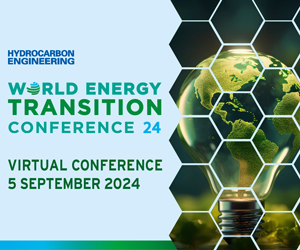Blue Technologies, which encompass any innovation aimed at using or preserving maritime resources in a sustainable manner, are emerging as key solutions to meet growing environmental challenges. Faced with pollution, climate change and the overexploitation of ocean ecosystems, these technologies offer promising prospects for transforming our relationship with the sea. By combining economic development and the preservation of biodiversity, they not only make it possible to revitalize marine ecosystems, but also to generate sustainable resource management practices. Thus, exploring the potential of Blue Technologies becomes essential to build a resilient and environmentally friendly aquatic future.
| Axis of impact | Transformation example |
| Sustainable fishing | Using sensors to monitor fish stocks and prevent overfishing. |
| Marine renewable energies | Harnessing the energy of waves and tides to produce electricity. |
| Protection of ecosystems | Technologies to restore marine habitats and limit pollution. |
| Water resources management | Tools to improve water quality and optimize irrigation. |
| Eco-responsible maritime transport | Boats with electric or hybrid propulsion to reduce CO2 emissions. |
| Ocean observation | Funny and satellites to monitor climate change and biodiversity. |
| Food innovation | Cultivation of seaweed and other marine life as a sustainable food source. |
- Sustainable maritime infrastructure
- Construction of ecological ports using recycled materials.
- Renewable energy
- Harnessing hydrokinetic and tidal energy.
- Ecosystem restorations
- Using advanced technologies to restore marine habitats.
- Smart aquaculture
- Integration of sensors to optimize sustainable production.
- Environmental Monitoring
- Deployment of maritime drones to monitor biodiversity.
- Autonomous maritime transport
- Development of autonomous ships to reduce emissions.
- Wastewater treatment
- Innovative technologies to purify effluents at sea.
- Marine communications
- Use of wireless networks for ecosystem monitoring.
- Education and awareness
- Digital platforms to provide information on ocean preservation.
- International partnerships
- Collaborations to manage marine resources sustainably.
Table of Contents
ToggleThe impact of Blue Technologies on the environment

THE Blue Technologies encompass a set of technological innovations intended to protect and preserve marine ecosystems. They have a significant impact on the environment by allowing more sustainable management of aquatic resources.
One of the most promising applications of blue technologies is in the field of renewable marine energies. The use of offshore wind energy, wave energy and tidal energy makes it possible to reduce dependence on fossil fuels while limiting CO2 emissions.
In terms of preservation of marine biodiversity, innovations such as underwater sensors and aquatic drones play a crucial role. These technologies make it possible to monitor the health of coral reefs, track fish populations and identify potential threats such as pollution or invasive species.
There marine pollution is also a major problem that blue technologies seek to resolve. Advanced filtration systems, underwater cleaning robots and plastic waste monitoring apps are helping to reduce ocean waste.
L’ethical aquaculture also benefits from technological advances. For example, water recirculation systems and water quality sensors enable sustainable management of aquatic farms, ensuring environmentally friendly food production.
To promote a maritime ecological tourism, mobile applications and online platforms provide information on sustainable tourism practices, protected areas and marine species. These tools raise public awareness and encourage responsible appreciation of marine resources.
Preserving marine ecosystems
THE blue technologies represent an exceptional opportunity to transform our aquatic future. By promoting sustainable and innovative solutions, they help preserve our marine resources while encouraging a blue economy environmentally friendly. The impact of these technologies on the environment is notable, particularly in terms of pollution reduction and preservation of biodiversity.
Blue technologies play a key role in preservation of marine ecosystems. By integrating sustainable practices, they help protect marine habitats while supporting local communities. For example, systems of marine surveillance help detect and prevent illegal activities, such as unregulated fishing, that threaten ecosystems.
The implementation of technologies in renewable marine energy is also crucial. Wind and hydrokinetic energy offer sustainable alternatives to traditional energy sources and reduce the carbon footprint, thus limiting the effects of climate change on the oceans.
Innovations inethical aquaculture and the sustainable resource management Marine resources contribute to maintaining the balance of ecosystems. By adopting responsible practices, such as sustainable fish farms, we can support global food demand without depleting wild fish stocks.
Blue technologies are not limited to resource conservation; they also play an important role in the public health and the food safety. By monitoring water quality and warning of potential contamination, they protect local populations from diseases linked to polluted water.
By adopting these technologies, it is possible to create a aquatic future more resilient and durable. The efforts of awareness and the establishment of favorable policies are essential to support this transition and encourage the adoption of sustainable practices on a large scale.
Sustainable solutions for water management
THE blue technologies are revolutionizing our relationship with the marine environment, providing innovative solutions to better manage aquatic resources. These technologies aim to reduce human impact on marine ecosystems while maximizing the sustainable use of these vast bodies of water. From renewable energy from the oceans to advanced water management systems, the benefits are numerous.
The use of renewable marine energies such as wave, tidal and offshore wind energy is a major breakthrough. These methods make it possible to produce clean energy on a large scale while minimizing the carbon footprint. Environmental impacts are much lower compared to traditional energy sources, providing a viable alternative to combat climate change.
THE water management systems also benefit from blue technologies. Thanks to smart sensors and monitoring networks, it is now possible to monitor water quality in different marine areas in real time. These innovations make it possible to quickly identify and address problems such as water pollution, algae blooms and desalination. Early warning and integrated water management systems thus contribute to preserving marine biodiversity.
Among the sustainable solutions for water management, some stand out for their efficiency and adaptability:
- Energy efficient irrigation systems, which use sensors to optimize water use in agriculture.
- Reuse of treated wastewater, making it possible to reduce fresh water consumption while reducing polluting discharges into waterways.
- Low-impact desalination technologies, providing an alternative source of drinking water in arid regions or islands.
By integrating these technological innovations, it becomes possible to develop sustainable initiatives and to actively fight against marine pollution. By investing in blue technologies, we are taking a crucial step towards a future where marine biodiversity is protected, and aquatic resources are used responsibly.

What are Blue Technologies?
Blue Technologies refer to innovations and sustainable solutions that use maritime resources to meet economic, environmental and social needs.
How can Blue Technologies help preserve the oceans?
These technologies help monitor the health of marine ecosystems, reduce pollution and promote sustainable fishing practices.
What are the economic advantages of Blue Technologies?
They open up opportunities for job creation, encourage the development of the maritime economy and promote emerging industries such as renewable marine energy.
How can Blue Technologies contribute to the fight against climate change?
They help reduce carbon emissions through solutions like sustainable aquaculture and offshore energy production, while increasing ocean carbon sequestration.
What challenges can arise with the implementation of Blue Technologies?
Key challenges include project financing, regulation, potential impact on marine ecosystems and the need for international collaboration.
What role do research and innovation play in Blue Technologies?
Research makes it possible to develop new technologies, improve existing practices and better understand marine systems in order to promote sustainable exploitation.
How can citizens get involved in promoting Blue Technologies?
Citizens can raise awareness in their community, participate in local conservation initiatives and support policies favorable to the blue economy.








